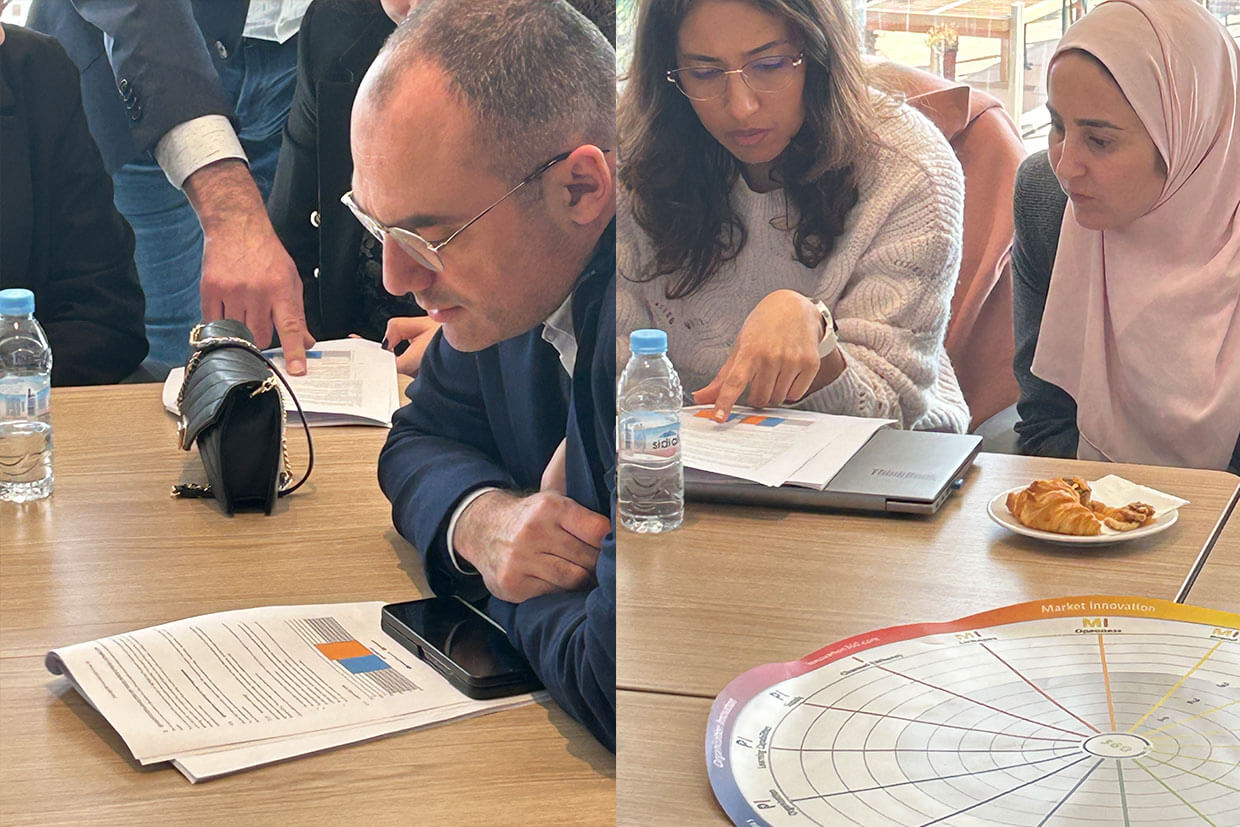The Certified Applied Innovation Leader program combines interactive online lectures, peer discussions in expert cohorts, self-study, a practical assignment, and an online exam
The Certified Applied Innovation Leader program combines interactive online lectures, peer discussions in expert cohorts, self-study, a practical assignment, and an online exam
All instructors are world-leading experts working at or partners to Innovation 360 Group. We also invite guest speakers such as Magnus Penker, world renowned thought leader and author of Play Bold (with a foreword by Philip Kotler as one of the world’s leading marketing thinkers), Peet Van Biljon, former global Practice lead of McKinsey & Co, John Saiz former CTO of NASA Johnsson Space Center, Gerry Purcell MD at Innovation360 Canada with +10 years as Principal at BCG and Kearney.
You will also receive an assessment of an organization of your selection, using the world’s most sophisticated assessment tool for Innovation Management – InnoSurvey® . During the certification program you will be granted access to several state-of-the-art, leading online innovation and ideation tools. This access will be available for 90 days following your certification.
Overview of the Three Blocks in the CApIL® Program
The CApIL® Certified Applied Innovation Leader program is structured into three distinct yet interconnected modules, often referred to as “blocks.” Each block is designed to build upon the previous one, offering participants a comprehensive learning journey that deepens their understanding and practical application of innovation management principles.
Block A
Foundations of Innovation Management and External Context
In Block A, participants are introduced to the foundational concepts and frameworks of innovation management. This block emphasizes understanding the external context in which innovation occurs, including key drivers and scenarios that impact innovation strategies. Through scenario planning and the use of tools like PESTLED360 and Scenario360, participants learn to analyze external factors and anticipate future trends. The goal of this block is to establish a solid foundation in innovation terminology, kick-start the innovation process, and prepare participants for deeper exploration in subsequent blocks.
Block B
Internal Context and Non-Linear Ideation
Block B focuses on the internal dynamics of innovation within an organization. Participants delve into the internal context, exploring how to cluster and drive non-linear ideation processes. This block introduces advanced ideation techniques and tools such as Transformation360 and Commercialization360, enabling participants to generate and refine big ideas that align with their organization’s strategic goals. The emphasis is on understanding and managing uncertainty, developing hypotheses, and conducting the Riskiest Assumption Tests (RATs). By the end of this block, participants will have a clear understanding of how to foster innovation from within and how to translate innovative ideas into actionable plans.
Block C
Culture, Leadership, and Commercialization
The final block, Block C, brings together the knowledge and skills acquired in the previous blocks, focusing on the cultural and leadership aspects of innovation. This block covers topics like fostering an innovation-friendly culture, leading innovation initiatives, and preparing for the commercialization of innovative ideas. Participants learn to conduct commercialization diagnostics and to fill gaps in their strategies with well-defined hypotheses and experiments. The block concludes with the development of innovation memos and high-level plans for implementing and scaling innovation within their organizations. Block C ensures that participants are equipped not only to generate innovative ideas but also to lead and sustain innovation efforts successfully.
Interested to become CApIL® Certified Applied Innovation Leader?
Who should participate and get certified?
The certification program is customized towards people within an organization that want to get a deeper understanding of how innovation management can link to value creation, growth, sustainable development and increased attractiveness. It is for the public sector, the private sector, and also for institutions. It can be to boost your team, department, or to bring more value to your organization.









